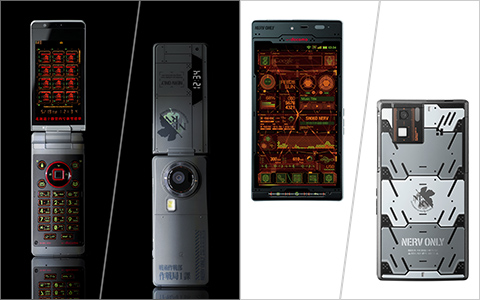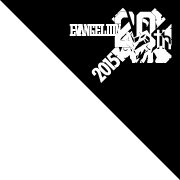An Unprecedented Free Paper
The Design of EVA-EXTRA
“What surprised me the most was Mr. Anno’s direction policy. Despite being busy with the actual film, he took the time to check on the details of a single pamphlet. As I was in charge of design of the home media packaging and the Complete Works, through these successive jobs I came to understand that characteristic sense. Incidentally, I was involved in a unique job that Mr. Anno played no part in. That was EVA-EXTRA.”
EVA-EXTRA was a free paper printed by Studio Khara that was available in TSUTAYA and convenience stores just before the release of 2.0. It was used by Khara for publicity for the Rebuild of Evangelion series.
“We need to make cool things so that young kids nowadays will become interested in Eva, or that’s at least what the editor Mr. Todoroki requested. I was given relative freedom in creating it, including the use of typography and illustrations. Mr. Anno was not involved at all in this work. He was involved thoroughly in the pamphlets and the Complete Works, but for this kind of promotional material like EVA-EXTRA, he left it to the staff. But in the end, despite not being involved, it ended up following Mr. Anno’s direction. I think that kind of minute adjustment is unique!”
Furthermore, Ichifuru’s name appeared in the staff credits for 2.0 under “Monitor Design Collaboration.” Even enthusiastic anime fans may not be familiar with that credit. This is because before 2.0, that staff credit was not present in Japanese anime production.
“To put it simply, I helped with creating some ideas for the design of the monitor screens in the film, such as in NERV Headquarters. The person who tapped me for it was a guy who likes graphic design, Mr. (Hiroyasu) Kobayashi of the digital department of Studio Khara. Since I liked gadgets, I thought I could look at all sorts of machinery and come up with some ideas at least.”
The meetings were held over a period of many months. Nevertheless, Ichifuru’s ideas were immediately adopted from the outset.
“It was a 3D scan of a monitor image that appears in the avant-title. Around that period, 3D scanners came out and depictions of particle assembly began to appear. Rather than drawing polygons using a wireframe, it was CG depicted by assembling particles, like white noise. As this was a new form of depiction in anime, it was very interesting to adopt it.”
To coincide with the release of Rebuild of Evangelion 2.0, docomo released the “Evaphone” SH-06A NERV. The exterior was based on Hideaki Anno’s design, however other design elements depicting the Eva universe, such as the button surroundings, operating screen design, and much of the included content, was handled by Ichifuru.
“A smartphone was released for the opening of Evangelion: 3.0, and I was working on its design at the same time as coming up with ideas for the monitor design. Therefore, the ideas I presented at those meetings were also applied to the smartphone, and the designs I did for the smartphone influenced the film. That was a really interesting experience.”

EVA-EXTRA, the free paper published by Studio Khara in the summer of 2009 just before 2.0 was released. The content is close to that of a visual book, with new scene photos and illustrations. It was published in many different forms for eight volumes. The eighth volume became especially well known in the summer of 2013, where it took the form of a video work that was displayed on the wall of the Shinjuku Wald 9 cinema, rather that being a printed publication. It was first published on the opening day of 3.0. The moving logo was handled under the direction of TGB’s Mr. Ishiura.

The SH-06A NERV and the SH-06D NERV phones which were released in 2009 and 2013 respectively. Both were docomo products. The display font was a thick Mincho “Matisu-EB,” and with the interface and design, these products respectfully depicted the Eva universe. Due to their unique build, they broke several of docomo’s regulations during production.

